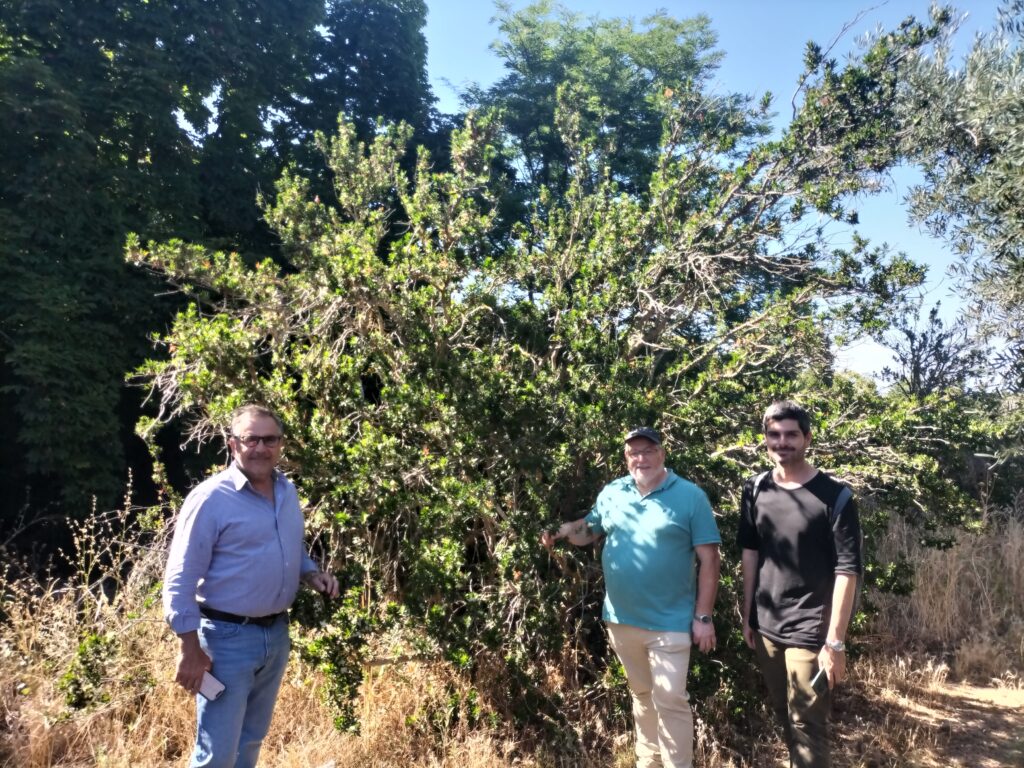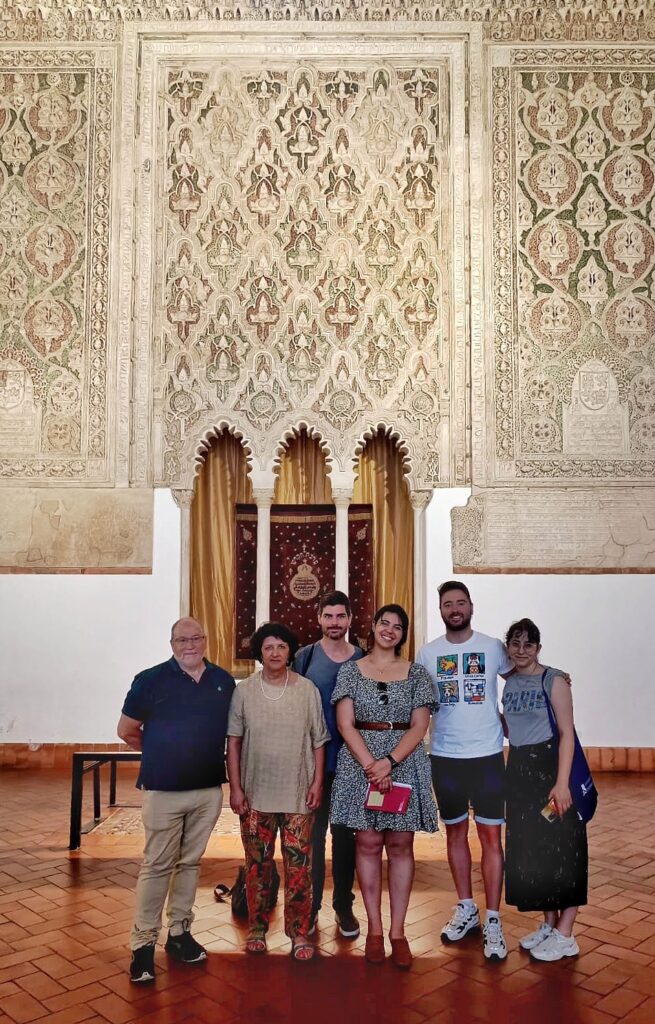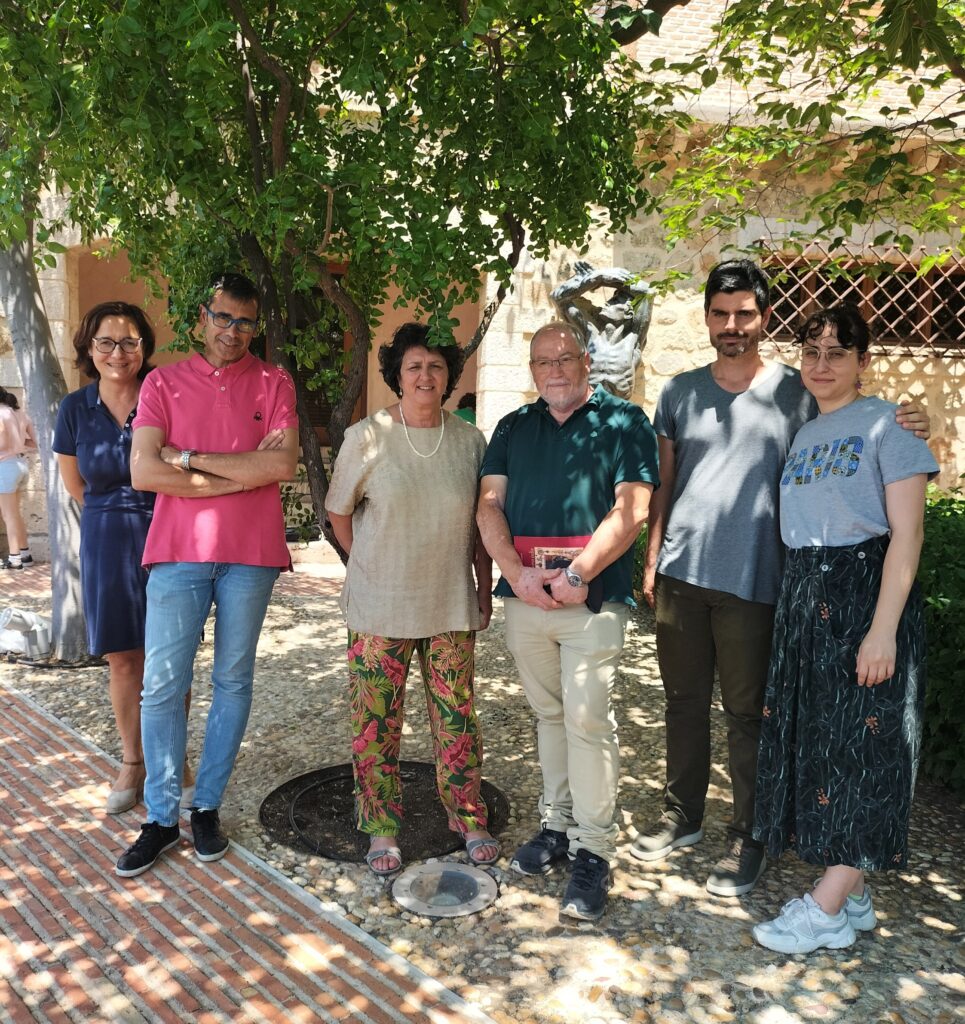Communications, Uncategorized
New steps in the knowledge and dissemination of Islamic Toledo
The Islamic Culture Foundation and the association Museo de Santa Cruz, ¡Vivo! sign a collaboration agreement
On 27 June, the association Museo de Santa Cruz, ¡Vivo! and the Islamic Culture Foundation (FUNCI) signed a collaboration agreement aimed at promoting the dissemination and protection of Islamic heritage, especially in Toledo and its province. The agreement was signed by the president of the association, Rafael García Serrano, and the general secretary of FUNCI, Encarna Gutiérrez. Sergio Isabel Ludeña, FUNCI’s scientific coordinator, was also present.

In this way, further progress is made in the collaboration that for several months has been established in various activities carried out in the Museum of Santa Cruz and supported by its friends’ association. These include the piece of the month on the Moor’s Workshop, the workshops on Arabic epigraphy and Ibn Arabi, the Alándalusoy dance conference and, more recently, the guided tour The tombstone of Amīra (11th century). Journey to the Ajira of a Muslim woman, which took place on 27 July.
The signing of this agreement between the two entities ensures that they will continue to work hand in hand to highlight the importance of the Islamic footprint present in Toledo and in the collections of the provincial museum, with the aim of bringing them rigorously closer to society.
Technical visit to Toledo with botanist and professor Segundo Ríos (UA)
On 24 and 25 June, part of the team from the Centre for Studies on Islamic Toledo (Islamic Culture Foundation) made a technical visit to several areas of the city together with Segundo Ríos Ruiz, professor at the University of Alicante (UA), director of the Torretes Biological Station (Botanical Garden of the University of Alicante) and collaborator of FUNCI. The aim of this days was to study in depth the plant diversity related to the Andalusian world in Toledo.

The first day was spent visiting the Museum of Santa Cruz, whose gardens are home to species that can be linked to Andalusian botanical traditions, such as oleander (Nerium oleander), cress (Prunus persica subsp. nucipersica) and cypress (Cupressus sempervirens). These plants are accompanied by a rich collection of Arabic epigraphy which, like an immutable witness to the past, contemplates the beautiful orchard. As already mentioned, FUNCI’s collaborations with the museum have been going on for several months and it is hoped that they will soon be reflected in another joint project.
In the afternoon of the same day, a visit was made to the Quinta de Mirabel, a cigarral [1] located in the southwest area of the city of Toledo. Two specimens of myrtle (Myrtus communis L. subsp. baetica (L.) Casares & Tito), planted at least three centuries ago, are preserved there. It was one of the most important ornamental plants in Andalusi gardening, but it suddenly disappeared from the 18th century onwards. This myrtle was replaced by other forms more in keeping with the taste of the time, until its almost complete extinction in Spain. There is currently a programme for the recovery of this variety of the species, driven by the survival of some specimens that had been preserved, unnoticed, in the Alhambra and the Generalife (Granada) and in an country house in El Real de San Vicente (Toledo) [2]. Little by little, new specimens of this plant are being identified. It is a memory that was until recently forgotten, but which is gradually being discovered that it has been unintentionally preserved from generation to generation in many more places.
The following day was devoted, first of all, to learning about the refurbishment that is being carried out in the courtyards of the Sephardic Museum of Toledo, in the company of the technical team in charge of it. For several months, FUNCI and the Sephardic Museum of Toledo have been collaborating in the development of a project that will soon see the light of day in the spaces of this state museum.

Finally, a meeting was held at the Royal Foundation of Toledo with its president, Eduardo Sánchez Butragueño. It was an opportunity to present, from FUNCI, the international platform Med-O-Med, cultural landscapes of the Mediterranean and the Middle East, and from the Royal Foundation, the Historic Nursery of Toledo, a project that the institution develops together with the Department of Sustainable Development (Regional Government of Castilla-La Mancha) and whose objective is to promote among the citizens the knowledge and preservation of the botanical wealth of the city of Toledo, especially of the native species and with a high cultural and environmental value due to their historical significance, age, rarity or size. The possibilities for synergy have been such that the Royal Foundation of Toledo has recently joined the Med-O-Med network.

The Islamic Culture Foundation would like to thank all the institutions and people who have made this enriching days possible.
Notes
[1] DRAE: Recreational house and surrounding orchard, on the outskirts of Toledo and overlooking the city.
[2] For more information, see:
Arrayán morisco: Primer protocolo de multiplicación y puesta en cultivo
El arrayán perdido de los jardines de la Alhambra


